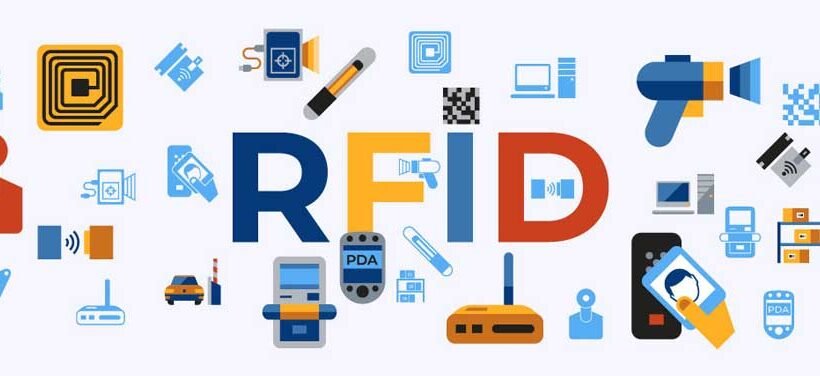In today’s fast-paced business environment, controlling losses is not just about cutting costs—it’s about maintaining operational efficiency, protecting investments, and maximizing profitability. Whether in retail, healthcare, logistics, or manufacturing, asset loss can result from theft, human error, misplacement, or inefficient manual tracking systems. Fortunately, RFID asset tracking has emerged as one of the most effective tools for mitigating these risks.
This blog explores how RFID asset tracking works, why it outperforms traditional tracking methods, and the tangible ways it reduces losses for organizations of all sizes.
What Is RFID Asset Tracking?
Radio Frequency Identification (RFID) is a technology that uses radio waves to identify and track items. Unlike barcodes, which require line-of-sight scanning, RFID tags can be read automatically and simultaneously, even from a distance. An RFID asset tracking system typically consists of three core components:
- RFID Tags:Small devices containing a microchip and antenna. These tags are attached to assets, carrying unique identification data.
- RFID Readers:Devices that capture signals from tags and transmit the information to a central system.
- Management Software:Platforms that collect, process, and present real-time data for analysis and decision-making.
This automated system drastically reduces the manual labor involved in tracking assets and provides precise, real-time visibility.
Common Causes of Asset Losses
Before diving into how RFID helps, it’s important to understand the primary sources of asset losses across industries:
- Theft and Shrinkage:Particularly common in retail, where shoplifting and employee theft cost billions annually.
- Human Error:Manual data entry, misplaced items, and poor documentation often result in costly mistakes.
- Operational Inefficiencies:Outdated paper or barcode systems can’t keep up with the volume and speed of modern business.
- Misplaced Assets:In warehouses, hospitals, or offices, equipment often gets moved without proper documentation, leading to lost productivity.
- Damage and Misuse:Without accountability, assets may be misused or stored improperly, leading to premature wear or destruction.
Each of these issues erodes profitability. The question is: how does RFID asset tracking directly address them?
Real-Time Visibility to Prevent Loss
One of the most significant advantages of RFID is real-time visibility. With readers placed strategically throughout a facility, companies can track the movement of assets as they enter or leave specific zones. This constant monitoring ensures:
- Unauthorized movement of items is immediately flagged.
- High-value assets are accounted for at all times.
- Items can be located instantly, reducing time wasted searching for misplaced equipment.
In sectors like healthcare, where life-saving medical devices or medications must be available on demand, this visibility can mean the difference between life and death. In retail, it prevents shrinkage by identifying discrepancies as they occur.
Reducing Theft and Shrinkage
Theft—both internal and external—is a major contributor to asset losses. RFID asset tracking creates a powerful deterrent by adding accountability. For example:
- Assets leaving a designated zone without authorization can trigger alerts.
- Staff are less likely to steal when they know assets are traceable.
- Real-time reporting makes it easier to identify suspicious patterns, such as repeated shortages tied to a specific shift or location.
Retailers using RFID have reported shrinkage reductions of up to 50%, demonstrating how this technology directly contributes to bottom-line savings.
Minimizing Human Error
Manual inventory management is prone to mistakes. Employees may mis-scan items, mislabel them, or fail to update records. RFID eliminates much of this risk by automating the tracking process. Because tags can be read in bulk without line-of-sight:
- Large inventories can be scanned in seconds.
- Data is automatically updated in the system, reducing reliance on manual entry.
- Errors from mislabeled or forgotten items are virtually eliminated.
This not only reduces losses but also improves efficiency, freeing employees to focus on higher-value tasks.
Improving Inventory Accuracy
Inventory inaccuracies often lead to over-ordering, stockouts, and hidden losses. RFID provides near-perfect accuracy compared to manual or barcode-based systems. Studies have shown that RFID can increase inventory accuracy from around 60–70% to more than 95%.
High inventory accuracy means businesses can:
- Avoid over-purchasing replacement stock for “lost” items.
- Reduce carrying costs associated with excess inventory.
- Prevent missed sales opportunities by ensuring stock availability.
This precision translates directly into financial savings and improved customer satisfaction.
Enhancing Asset Utilization
Lost or misplaced equipment often results in duplicate purchases, which unnecessarily increases costs. RFID asset tracking ensures that assets are always locatable and accounted for, maximizing utilization rates. For instance:
- Hospitals can ensure critical medical devices are always available without buying unnecessary backups.
- Manufacturers can track tools and machinery to avoid production delays caused by misplaced equipment.
- Construction firms can monitor tools and vehicles across job sites, reducing downtime.
By using assets more efficiently, organizations spend less on replacements and reduce waste.
Accountability Through Audit Trails
Another way RFID reduces losses is by providing a digital audit trail of asset movement. Each time an item is scanned or passes a reader, the system records who handled it, where it was moved, and when.
This level of accountability:
- Discourages misuse of assets since employees know their actions are tracked.
- Simplifies compliance reporting in industries like healthcare, where strict regulations apply.
- Helps identify the root causes of repeated losses or damage.
When every asset has a history, it becomes much harder for items to “disappear” without explanation.
Reducing Administrative Costs
While the direct reduction in asset loss is the most obvious benefit, RFID asset tracking also cuts losses in administrative overhead:
- Less time is spent on manual inventory counts.
- Automated reporting reduces the need for additional staff.
- Faster audits mean fewer disruptions to daily operations.
The combined savings in labor, accuracy, and time further amplify the return on investment.
Case Studies: Real-World Applications
Retail
Major retailers like Walmart and Macy’s use RFID to track inventory at the item level. By doing so, they’ve drastically reduced shrinkage while improving stock accuracy and customer satisfaction. RFID enables them to identify missing items quickly, restock shelves efficiently, and reduce over-ordering.
Healthcare
Hospitals lose millions each year to misplaced medical devices and supplies. With RFID, staff can instantly locate critical equipment, ensuring faster patient care and reducing the need for expensive replacements.
Logistics
Shipping and logistics companies use RFID to track goods through the supply chain. Real-time visibility reduces theft, ensures goods reach their destination, and minimizes costly delays caused by missing shipments.
Overcoming Common Concerns
Some organizations hesitate to adopt RFID due to perceived challenges:
- Cost:While the upfront investment may be significant, the long-term savings from reduced losses and improved efficiency outweigh the expense.
- Integration:Modern RFID systems can integrate seamlessly with existing enterprise resource planning (ERP) and warehouse management systems (WMS).
- Privacy:Data security measures ensure that RFID systems comply with regulations and protect sensitive information.
By addressing these concerns, businesses can confidently implement RFID and start reaping the benefits.
The Bottom Line
Asset losses—whether from theft, misplacement, or inefficiency—can significantly impact profitability. RFID asset tracking offers a powerful solution by providing real-time visibility, improving accuracy, reducing human error, and creating accountability.
The result is fewer losses, lower operating costs, and improved efficiency across the board. From retail to healthcare to logistics, companies that invest in RFID not only protect their assets but also position themselves for long-term success.








